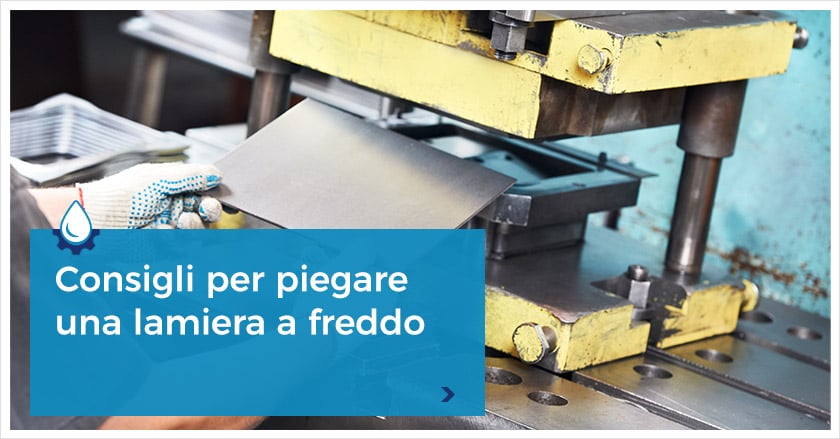
Tips for cold bending of sheet metal
Plastic deformation is the transformation of materials into a solid state that can take place at different temperatures between cold and hot.
But, when it comes to plastic, how can you distinguish cold deformation from hot deformation?
It's actually quite simple. For cold deformation, the deformation involves hardening or the raising of mechanical properties, such as the breaking load and those of yield and surface hardness.
More generally, this deformation can occur through two different types of processes:
- Primary, with the transformation of melted material into commercial semi-finished products
- Secondary, with the transformation of commercial semi-finished products into pieces
Cold plastic deformation exploits the ability of the material to contort before breaking and by dividing the life of the component into 7 phases, occurring in the interval between 2 and 5 or between yield and maximum load:
- Initial elastic behaviour
- Enervation
- Pplastic-type deformations
- Hardening
- Maximum load
- Necking
- Break-up
Learn more about plastic deformation in this article.
The importance of lubrication in cold plastic deformation
The effectiveness and performance of a component made through cold plastic deformation are highly dependent on the lubricant solution adopted during the production phase.
To be suitable for cold plastic deformation, the lubricant must work on the machinery, creating a film that resists the maximum friction conditions that are generated between the machinery itself and the material being processed.
Using the wrong lubricant or the wrong lubrication methodology during cold plastic deformation operations can lead not only to damaging the sheet metal but also to the machinery itself, with substantial repair costs along with loss of production.
In this manufacturing process, lubrication does not "only" reduce wear and friction to a minimum but also:
- Facilitates a proper distribution of the stresses to which the sheeting is subjected
- Allows greater control of the temperature and thus of the bending of the sheet
- Allows for more precise surface finishing
How cold plastic deformation works
Today, one of the most commonly-used cold plastic deformation processing techniques is deep drawing where, using presses and lathes, concave shapes are given to the sheeting, without changing their thickness.
The operation takes place through three tools that work synergistically with each other, namely the die, punch and blank holder, which together constitute the mould, where:
- The sheet is placed on a matrix
- Subsequently, it is blocked at the edges by a blank holder
- The sheeting is the pressed in the desired point by a punch, until the sheet itself touches the bottom of the die on which it rests
As to the moulding, which can take place through mechanical presses, used above all in the case of fast productions and small-/medium-deep drawing or hydraulic presses, necessary instead when the drawing depths are more consistent.
Incorrect lubrication can lead to the malfunction of the materials or to a lack of synchrony between them, which in an operation such as that of cold plastic deformation where synergy and timing of the operations are of fundamental importance, can mean obtaining an imperfect or even bent sheeting.
To find out which lubricants are more functional for cold plastic deformation, click below, tell us your needs and we can find your ideal solution together.
A lubricant designed for your needs
This ensures:
- Greater durability for your component
- Lower production costs
- Optimal performance



